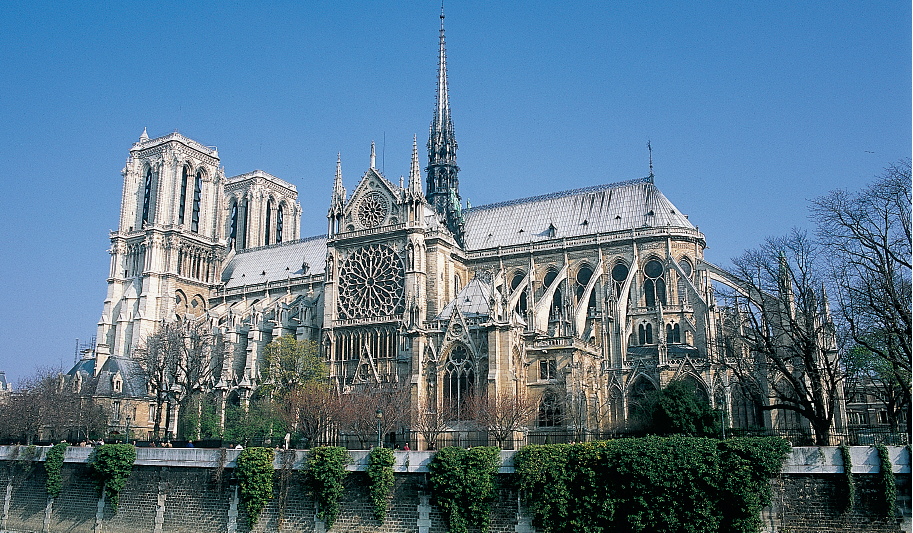A History of World Societies:
Printed Page 412
A History of World Societies Value
Edition: Printed Page 409
Cathedrals and a New Architectural Style
As we have seen, religious devotion was expressed through daily rituals, holiday ceremonies, and the creation of new institutions such as universities and religious orders. People also wanted permanent visible representations of their piety, and both church and city leaders wanted physical symbols of their wealth and power. These aims found their outlet in the building of tens of thousands of churches, chapels, abbeys, and, most spectacularly, cathedrals. A cathedral is the church of a bishop and the administrative headquarters of a diocese. The word comes from the Greek word kathedra, meaning “seat,” because the bishop’s throne, a symbol of the office, is located in the cathedral.

In the tenth and eleventh centuries cathedrals were built in a style that resembled ancient Roman architecture, with massive walls, rounded stone arches, and small windows — features later labeled Romanesque. In the twelfth century a new style spread out from central France. It was dubbed Gothic by later Renaissance architects who thought that only the uncouth Goths could have invented such a disunified style. The basic features of Gothic architecture — pointed arches, high ceilings, and exterior supports called flying buttresses that carried much of the weight of the roof — allowed unprecedented interior light. Stained-
Cathedrals served secular as well as religious purposes. Local guilds met in the cathedrals to arrange business deals, and municipal officials held political meetings there. Pilgrims slept there, lovers courted there, and traveling actors staged plays there. Through its statuary, paintings, and stained-